The Immortal 17: Civil War Veterans on the Active Army List in 1909, Part 1
While skimming old newspapers online, I discovered a fascinating article published on May 30, 1909, in the New-York Tribune. It was titled, “Memorial Day This Year Finds Sixteen Veterans of The Civil War Still on The Active List of U.S. Army Officers.” This discovery sent me down a research rabbit hole, something any historian is all too familiar with.
I was drawn to this article for two reasons. First, due to fact that there were Civil War veterans still active in the U.S. Army 40 years after the war ended. Second, because there were photos of these aged officers.
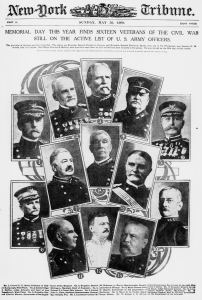
After further investigation, I learned that 134 officers who had served in the Civil War were still on the active list in 1903. This number dwindled to 16 by May 30, 1909. By 1912 only four remained.[1]
I noticed some similarities between the 16 officers still active on May 30, 1909. (I included one more officer in this blog post, Charles S. Walkley, who retired four days before the article was published.) Most were mere teenagers when they went to war between 1861 and 1865. Ten graduated from West Point (two in 1868; three in 1869; two in 1870; and three in 1871). Two were Medal of Honor recipients. Eleven are buried at Arlington National Cemetery. (The burial location of one is unknown.) Remarkably, 11 of these officers were still alive when the U.S. went to war with Germany in April 1917.
I’ve included a short bio of each officer mentioned in this 1909 article. Some of these veterans, like John Clem and Arthur MacArthur, will be quite familiar to readers. However, most won’t be despite their lengthy and distinguished service records.
Edward Edgar Wood (September 17, 1846 — June 21, 1924)
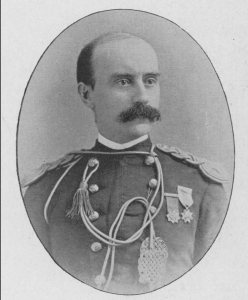
Wood enlisted as a private in the 17th Pennsylvania Cavalry on September 8, 1862. He was captured with dozens of his comrades at Occoquan, Virginia, on December 28, 1862. After his surrender, Wood was confined at the Castle Thunder Prison in Richmond, Virginia. He was exchanged in May 1863, just in time to participate in the Battle of Gettysburg. He went on to fight at the Wilderness, Winchester, and Five Forks, rising to a first lieutenant by the time he was mustered out in June 1865. Wood was appointed to West Point in June 1866 and graduated in the Class of 1870. He taught French, Spanish, geography, history, ethics, and the modern languages as an assistant professor at his alma mater. He retired as a brigadier general on September 17, 1910. After his death at the age of 77, Wood was buried at the United States Military Academy Post Cemetery.[2]
Edgar Swartwout Dudley (June 14, 1845 — January 9, 1911)

Dudley enlisted as a second lieutenant in the 1st New York Light Artillery on May 28, 1864. He served until he was mustered out six months later. He was appointed to West Point in 1866 and graduated in the Class of 1870. He worked for a time as a professor of military science and tactics at the University of Nebraska. From December 1898 to 1901, Dudley served as a judge advocate and military advisor to the governors of Cuba (Major Generals Leonard Wood and John R. Brooke). He retired as a brigadier general on June 14, 1909. Dudley died at the age of 65 and was buried at Johnstown Cemetery in Johnstown, New York.[3]
Charles Morton (March 18, 1846 — December 20, 1914)
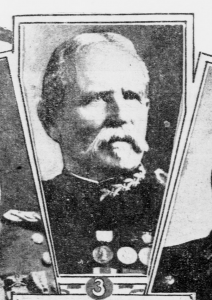
Morton enlisted as a private in the 13th Missouri Infantry on July 27, 1861 (later changed to the 25th Missouri Infantry and then consolidated to form the 1st Missouri Volunteer Engineers). He served at Shiloh, Corinth, and during the Atlanta Campaign, until he was discharged on September 13, 1864. He was appointed to West Point in 1865 and graduated in the Class of 1869. Morton saw action against Geronimo and the Apaches in Arizona and took part in the Bighorn and Yellowstone Expedition. He participated in the Santiago Campaign during the Spanish-American War and was cited for gallantry at Santiago on July 1, 1898. He took part in numerous engagements during the Philippine Insurrection. He retired as a brigadier general on March 18, 1910. Morton died at the age of 68 and was buried at Arlington National Cemetery.[4]
William Louis Marshall (June 11, 1846 — July 2, 1920)
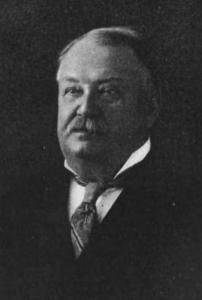
Marshall’s great uncle was U.S. Supreme Court Justice John Marshall. He enlisted as a private in the 10th Kentucky Cavalry and served from August 1862 to September 1863. Marshall was appointed to West Point in 1864 and graduated in the Class of 1868. He entered the Army Corps of Engineers after graduation. Marshall explored and surveyed parts of Utah, Nevada, Arizona, New Mexico, and Colorado. In 1873, he discovered what became known as the Marshall Pass across the Rocky Mountains in Colorado. Marshall designed most of the Illinois and Mississippi Canal (Hennepin Canal), which connected the Illinois and Mississippi Rivers. He served as chief of engineers from July 1908 until his retirement in June 1910. Marshall died in 1920 at the age of 74 and was buried at Arlington National Cemetery.[5]
Owen Jay Sweet (September 4, 1845 — January 4, 1928)
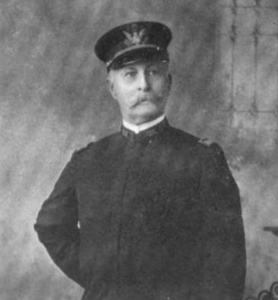
Sweet was appointed a second lieutenant in the 137th New York Infantry in September 1862. He fought at Fredericksburg, Chancellorsville, Gettysburg, and during General William T. Sherman’s campaigns. Sweet was wounded twice and mentioned for conspicuous gallantry. He was made a captain at the age of 21 in August 1863. He was mustered out in June 1865. In May 1867, Sweet was commissioned directly into the U.S. Army as a second lieutenant of the 40th U.S. Infantry. He was stationed in the Philippines after the Spanish-American War, where he came under fire for his treatment of prisoners. He retired from the army in September 1909. Sweet died at the age of 82 in 1928 and was buried at Arlington National Cemetery.[6]
John Lincoln Clem (August 13, 1851 — May 13, 1937)

Originally born John Joseph Klem, the 9-year-old Ohio native ran away from home and joined the 22nd Michigan Infantry as a regimental marker. He went into action with his regiment at Chickamauga, where the unit suffered the loss of 389 killed, wounded, or captured of 455 engaged. Within six months, the Army of the Cumberland’s young soldier became a national celebrity. He eventually changed his name to John Lincoln Clem. In December 1871, President Ulysses S. Grant appointed him a second lieutenant in the 24th U.S. (Colored) Infantry. Clem married the daughter of Civil War Major General William H. French in 1875. He retired with the rank of major general in 1915. He was the last Civil War veteran on the active army list. Clem died at the age of 85 and was buried at Arlington National Cemetery.[7]
William Wallace Robinson, Jr. (April 2, 1846 — March 24, 1917)

William Wallace Robinson, Jr. was the son of William Wallace Robinson, colonel of the Iron Brigade’s 7th Wisconsin Infantry. He was appointed to West Point in July 1864 but left the academy and enlisted in the 7th Wisconsin on March 14, 1865. His Civil War service was short-lived. Still, he saw action at Five Forks. He was discharged on June 30, 1865, and returned to West Point, graduating in the Class of 1869. Robinson, Jr. served as a cavalry officer on the American Frontier, participating in the infamous Wounded Knee Massacre. During the Spanish-American War, he requested to be sent to the front but was kept in Seattle, Washington, in a quartermaster role responsible for overseeing the transportation of supplies to the Philippines and Alaska. He retired as a brigadier general in April 1910. Robinson, Jr. died at the age of 70 and was buried at Arlington National Cemetery.[8]
Stay tuned for Part 2 of this article.
Endnotes
[1] Confirmation of Leonard Wood (Washington, D.C.: U.S. Government Printing Office, 1904), 77-79; The United States Army and Navy Journal and Gazette of the Regular and Volunteer Forces, Volumes XLVII—1909-1910 (New York: Evening Post Building, 20 Vesey Street), 589.
[2] George W. Cullum, Biographical Register of the Officers and Graduates of the U. S. Military Academy, at West Point, New York, Since Its Establishment in 1802. Supplement, Volume VI-A, 1910-1920, ed. by Wirt Robinson (Saginaw, MI: Seemann & Peters, Printers, 1920), 147; “Edward Edgar Wood,” Fifty-Second Annual Report of the Association of the Graduates of the United States at West Point, New York, June 11th, 1921 (Saginaw, MI: Seemann & Peters, Inc., Printers and Binders, 1921), 145-46; Franklin Ellis and Samuel Evans, History of Lancaster County, Pennsylvania With Biographical Sketches of Many of Its Pioneers and Prominent Men (Philadelphia: Everts & Peck, 1883), 153; The Union Army: A History of Military Affairs in the Loyal States 1861-65. Records of the Regiments in the Union Army. Cyclopedia of Battles. Memoirs of Commanders and Soldiers. Vol. VII. Cyclopedia of Battles-Helena Road to Z (Madison, WI: Federal Publishing Company, 1908), 654; Albert N. Marquis, ed. Who’s Who in America: A Biographical Dictionary of Notable Living Men and Women of the United States, Vol. VI, 1910-1911 (Chicago: A.N. Marquis & Company, 1910), 2,123.
[3] Cullum, Biographical Register of the Officers and Graduates of the U. S. Military Academy, 148; “Document No. 721: Findings in Case of Harwood Dudley and Alfred Dudley Dennison,” in 63rd Congress, 2d Session, December 1, 1913-October 24, 1914, House Documents, Vol. 160 (Washington: Government Printing Office, 1914), 1-3; Men and Women of America: A Biographical Dictionary of Contemporaries (New York: L.R. Hamersly & Company, 1910), 527; “The Commandery-in-Chief, In Memoriam: Edgar Swartwout Dudley,” Military Order of the Loyal Legion of the United States Journal of the Proceedings of the Twenty-Seventh Annual Meeting of the Commandery-in-Chief Held in the City of Philadelphia, October 18, 1911 (Philadelphia, 1911).
[4] George W. Cullum, Biographical Register of the Officers and Graduates of the U. S. Military Academy, at West Point, N.Y., From Its Establishment, In 1802, to 1890, With the Early History of the United States Military Academy. Vol. III. Third Edition. Nos. 2001 to 3384 (Boston and New York: Houghton, Mifflin and Company, The Riverside Press, 1891), 137.
[5] “Gen. William L. Marshall,” Reclamation Record 5, no. 11 (December 1914): 462; Cullum, Biographical Register of the Officers and Graduates of the U. S. Military Academy. Vol. III, 109; Paul A. Tenkotte and James C. Claypool, The Encyclopedia of Northern Kentucky (Lexington: The University Press of Kentucky, 2009), 581; “Document No. 807: Findings of Court of Claims in Case of William L. Marshall,” in 62nd Congress, 2nd Session, December 4, 1911-August 26, 1912, House Document, Vol. 144 (Washington: Government Printing Office, 1912), 1-3.
[6] “The Twenty-Eight Infantry,” Army and Navy Illustrated 36, no. 1,286 (August 6, 1904): 26; “Personals,” Army and Navy Journal 45, no. 2 (September 11, 1906): 35; Guy V. Henry, Military Record of Civilian Appointments in the United States Army, Vol. 1 (New York: Carleton, Publisher, Madison Square, 1869), 467; Edward H. Hall, ed., Register of the Empire State Society of the Sons of the American Revolution (New York: The New York Public Library, 1899), 316; “Retirement and Promotions,” Army of Navy Journal 46, no. 38 (May 22, 1909): 1,068; “The American Camp at Matanzas,” The Cuban Review and Bulletin 5, no. 10 (September 1907): 25; Christopher J. Einolf, America in the Philippines, 1899-1902: The First Torture Scandal (New York: Palgrave Macmillan, 2014), 93-94.
[7] “The Drummer Boy of Chickamauga,” in Dennis M. Keesee, Too Young to Die: Boy Soldiers of the Union Army, 1861-1865 (Huntington, WV: Blue Acorn Press, 2001), 224-35; “Report No. 478: Retirement of Certain Officers,” in 62nd Congress, 2d Session, House Reports (Public), December 4, 1911-August 26, 1912, Vol. 3 (Washington: Government Printing Office, 1912), 1.
[8] “William Wallace Robinson, Jr.” in Forty-Eighth Annual Reunion of the Association of the Graduates of the United States at West Point, New York, June 12th, 1917 (Saginaw, MI: Seemann & Peters, Inc., Printers & Binders, 1917), 111-116; “The Commandery-in-Chief, In Memoriam: William Wallace Robinson, Jr.” in Military Order of the Loyal Legion of the United States Journal of the Proceedings of the Thirty-Third Annual Meeting of the Commandery-in-Chief Held in the City of Philadelphia, October 24, 1917 (Philadelphia, 1917); Sam Russell, “First Lieutenant William Wallace Robinson, Jr, Adjutant, 2nd Battalion, 7th Cavalry,” Army at Wounded Knee (September 24, 2014), https://armyatwoundedknee.com/2014/09/24/first-lieutenant-william-wallace-robinson-jr-adjutant-2nd-battalion-7th-cavalry/.
That was Great … leaves me waiting for part 2…. Great find .. you were meant to tell their stories. Sometimes things finds us . Historic lives matter.. well done
Fascinating post! We all know about the “rabbit hole” but, that’s what keeps us going! Looking forward to part 2.
Fascinating!
The end of the Civil War and the start of World War One is roughly 50 years. That’s as close as Vietnam is to us now.
Interesting!
Edward Edgar Wood was one of many ex-Volunteers with combat experience who received appointments to West Point (in many cases, such as Lieutenant Wood, accepting demotion to Plebe) in order to become an acceptable part of the Regular Army as commissioned officer… after a further four years of “training.” It would be an interesting study to determine if these “super-warriors” played a significant role in U.S. success during Spanish-American War and World War One.
[Other Civil War veterans who subsequently attended West Point include Charles Morton; Eric Bergland; and John G. Bourke.]